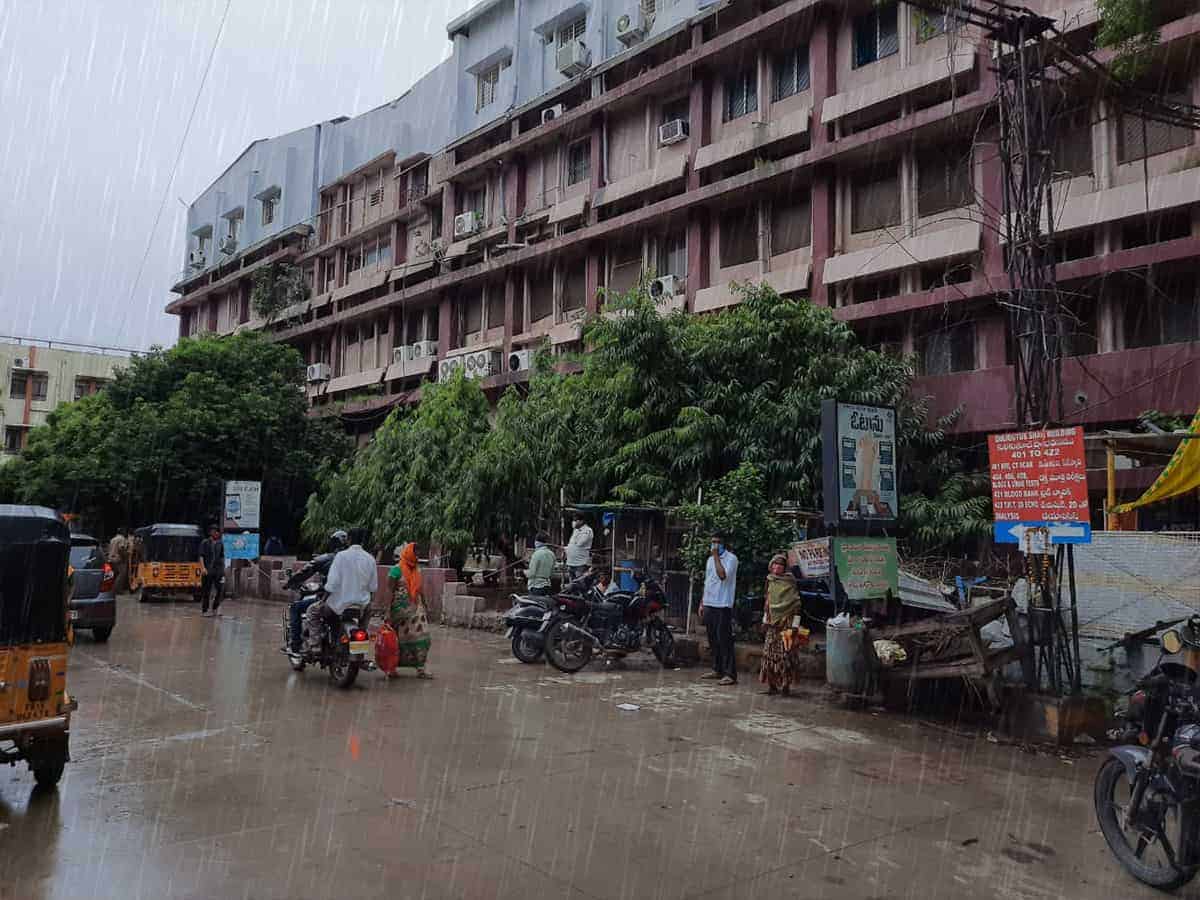Daneesh Majid and Yunus Y. Lasania
Hyderabad: The Osmania General Hospital (OGH) has been shut for about a month by the state government after some of its wards were flooded last month. However, claims of the heritage structure being prone to flooding seem to be untrue as not a drop of water has entered its wards in spite of heavy continuous rains lashing the city over the last one week.
Even as droplets of drizzling rain swathed the whole hospital’s premises life goes on as usual for doctors, patients and nurses who have now also deal with lack of space, apart from COVID-19.

After rain water entered OGH’s wards on July 20 and 21, the Director of Medical Education asked the in-charge superintendent of OGH to shut down the building and shift patients to the Quli Qutb Shah building in the premises. Ironically that building, where some construction work was still ongoing, has seen its roof leaking, and a space crunch, among other issues.
The fact that water did not enter the old building, adds credence to the claim that last month’s water-logging was the result of a nala getting blocked. Dr. Iqbal Jaweed, an alumni of Osmania Medical College, who worked at OGH, said that the building should be reopened. He pointed out that the water-logging in the heritage structure happened only due to the sewer-line getting blocked underneath.
Building was flooded due to choked drainage
When contacted, Dr. B. Nagender, Superintendent of OGH, said that that there was no other option than to close the old building last month. “Under the building which is more than 100 years old, there is a drainage line from Begum Bazaar that passes through the hospital. Because of the choking of the general drainage, water was flowing into the Osmania Hospital,” he explained.

Conceding that no rain water entered the old heritage building in spite of the heavy rains, the superintendent stated that they cannot shift back into it immediately. “In fact, postgraduate students along with many others are now asking to open the old building and utilize it,” added Dr. Nagender.
After the old building was vacated and shifted to the Quli Qutb Shah block last month, infrastructure problems have been cropping up one by one. Junior doctors from the Osmania Medical College, who are working at OGH, said that operation theatres are not fully operational, apart from other shortage of medical instruments. “There were no gloves as well. We finally had to use our bare hands to treat patients, and sanitise ourselves afterwards,” said a doctor, who did not want to be quoted.
The history
OGH was completed in 1925, after Hyderabad was affected by the bubonic plague around 1911. The city administration then took care of the issue, following which the then Nizam Osman Ali Khan (1911-48) set up the City Improvement Board (CIB) in 1912 to improve Hyderabad’s infrastructure. It was designed by architect Vincent Esch, who also designed the Victoria Memorial in Kolkata.
The OGH’s old building (along with others like High Court and City College) is a fine example of the Osmanian style or Indo-Saracenic genre of architecture and is an integral part of Hyderabad’s 20th century riverscape and skyline. The CIB during the reign of Osman Ali Khan had transformed the medieval city into a modern metropolis, complete with infrastructure like the High Court, railway stations, schools and OGH.

